We had front seats on the top level of a double-decker bus. From this perch, we got the same view as the driver would, but only better because we were higher up and we didn’t have to pay attention to the road. Snow rested in veins of the mountains tops, in the deep crevices that see little to no sun. Evidence of recent plows left small walls of white beside the road.
We settled in for the long ride from Iquique, Chile, with its massive sand dune dragon within its city limits on the coast of the Atacama desert, to the 15,000-foot Andes mountain pass and into Argentina.
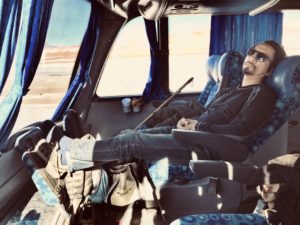
The border crossing from Chile to Argentina was one of the easiest ones yet. All we needed were valid passports, no proof of onward travel, no bank statements showing we were not going to become a ward of their welfare system, and no itinerary details necessary. We walked into a building, got the Chile exit stamp, then took two steps to the Argentina side to get our entry stamps, and placed our bags on a conveyor belt, picked them up after the x-ray scanner, no searches, then we walked out the other side of the building and out into the cool mountain air of Argentina.
A quick note: One of my cool cousins released a book this past week called The Hide and Seek Moon. It’s a wonderful book. I’m quite proud of him. Check out the link above.
Hill of Seven Colors
We descended into Argentina and got off the bus in the charming if not touristy town of Purmamarca. The local population is a little over 2,000 residents. The entire town can be explored within an hour, but there are some short hikes in the vicinity. Colorful adobe homes line the dusty streets. The entire town sits in front of a hill that displays its minerals in an array of colors.

We checked in to the Mama Coca Hostel and with little time left to the day, we walked across the road and climbed a hill to get a great view of the mountains on the other side of the town. They call it the hill of seven colors.
Trin counted aloud: uno, dos, tres… yup, seven colors. We snapped a few pictures, sat there for a while, then walked back into town for our first Argentine dinner, a lamb stew. It was good and just what we needed after the 20-hour bus ride.

In the morning we explored the seven colored hill up close. We followed a path that winds between rough ridges of pink, green, grey, purple, orange, brown, and white.
At some point, we heard a soft noise and turned to see a woman singing with her arms raised up. It was a lovely sound that echoed off the rocks. In any other place that might seem odd but at that moment, it was as natural as the beauty of the place, and it provided a momentary and magical soundtrack to the beautiful landscape.
Tilcara Town
We hopped on a bus to the town of Tilcara, just under an hour north of Purmamarca. Tilcara felt a bit more like a real town that happens to have some nice attractions, as opposed to Purmamarca’s contrived feel of a town purpose-built for tourism.

There’s a lot more lodging options in Tilcara, and more affordable too. We got a room at Hostel Tierra Andina, no frills but it had a kitchen and free breakfast and the staff were nice. They had three fun-loving dogs. One of them is a Jack Russel mix that likes to play all the time. He would put a stick down near my feet and then step back crouching in anticipation, never doubting that I would know what to do with the stick. When I throw the stick and he’d retrieve it with the agility and intensity of a professional soccer player as if it were the most important thing to do in his world.
Pucara de Tilcara Ruins
This hostel was our base for the next few days. The next day we walked up to the Pucara de Tilcara ruins. This Pre-Inca village was originally built by the Omaguaca tribe. Large stones perfectly aligned to form square corners and little doorways. Roofs made of cane and wood from the cacti overlaid with mud. We wandered around the village in and out of tiny ancient homes, around workshops, and the Iglesia which was a place of worship. There were altars that seem to suggest that sacrifices were once made here.
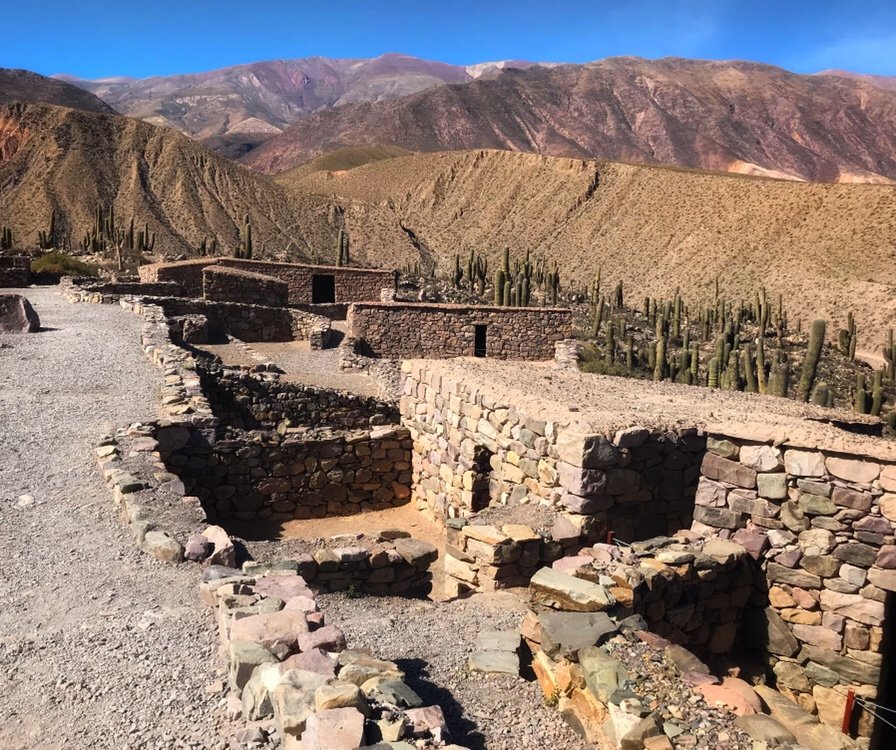
The sun was hot and the sky was clear and it gave us clear views of the surrounding landscape from the ancient village’s fortress-like setting. We ducked into one of the old stone homes and stood by the cool interior wall. We leaned against the stones that were still cold from the night air. A light breeze wafted through the wall. The stones acted as a coolant for the incoming warm air. When it passed over us it felt like air from a refrigerator. I leaned my forehead against one of the stones and felt it immediately taking the heat from me. We stood there in silence and let the stones from the earth and the breeze cool us.

In the evening we hung out at the hostel’s common area and met a couple from Slovenia, Matteo, and Naya. They have done a lot of traveling, both on their own and as a couple. Matteo is half-Slovenian and half-Argentinian, and as part of his Ph.D., he is traveling all over Argentina and logging samples of bird profiles and population. I learned that public education in Argentina is free, even for foreigners.
Colors of Poverty
It has been interesting experiencing the differences between the countries here in South America. It seems the better off each country is the better everyone treats each other. The more I see the more I believe that theft and crime is one of the many reasons a poor region stays poor.
I know it is complicated and there is much more to it than that, but crime makes it very difficult for a society to rise. Some say crime is a result. This may be correct, but perhaps it is also the catalyst that keeps a people poor. It seems that wealthy areas have a foundation of helping each other achieve. Each individual must be responsible, but they can rise higher when the entire community is rising.

Argentina has impressed me. As a country, it appears to be doing better than most here in South America. The homes are nicer, beautiful neighborhoods are more abundant, people smile as you pass them by on the street. It just seems to be a very pleasant place to live. Oh, and they love futbol!
“Remember that there is a futbol match between Argentina and Nigeria this Tuesday. It is a national event,” said Matteo.
“The passion you will see in front of the TV is amazing. They talk for hours about it on every radio station. The Argentine dollar is falling drastically, but you don’t hear anyone talking about it, only futbol,” he added.
Colors of the Flag
The next morning I sat next to Marie for breakfast. She lives in Buenos Aires where she was born. I asked her what her thoughts were on the economy. “Do you think it will improve soon?”
We are a resilient people and even if the economy falls we still have our freedom. We have our rights, we can choose. We can be born in any home in Argentina and grow up and do what we want with our lives. This is more important than money.
“No,” she said shaking her head, she didn’t see it getting better. She spoke with a warm smile and a mild manner. I could perceive a strong personality underneath, not only in the things that she said but more so in the way she said them. She had an inherent confidence that is secure in who she was and who the people in her country were.
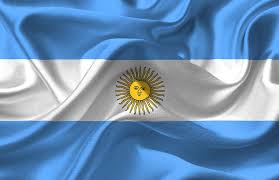
“But we are a resilient people. Even if the economy falls we still have our freedom. We have our rights, we can choose. We can be born in any home in Argentina, poor or rich, and grow up and do what we want with our lives. This is more important than money.”
She seemed to have no hate for the political party she disagrees with. The people of Argentina still have their freedom. She has learned to love the important things in life and contribute to the kindness that marks this region.
I’m reminded again how important it is to treat others with kindness, even strangers, even people we have nothing in common with. Each of us is personally responsible for being part of a great nation – or part of tearing it down.

See also our article on the Wine of Mendoza.
The Mountain of Fourteen Colors
So a hill with seven colors is pretty amazing. But sometimes seven just isn’t colorful enough, apparently. How about eight, or maybe ten colors?
Well, the Serranía del Hornocal has fourteen colors. And it’s not just a hill, it’s a mountain (a mountain range really, because that’s what serranía means). This is where we visited the following day, starting off with an hour bus ride further up north to the town of Humahuaca. Here every day at 12 noon, a life-size statue of San Francisco emerges from the clock tower to bless the town. It was an oddity that greeted us upon arrival.

The town was pumped up for the Argentina-Nigeria match. “Kids” of all ages were decked out in all kinds of white and light blue – jerseys, horns, capes, flags, and facial paint. There was a jumbotron set up in the plaza and a decent crowd had gathered.
We left all that craziness behind us as our hired truck climbed up to about 14,000 feet, going through some beautiful landscapes to the sound of the futbol game on the radio. Our driver, Jose, would probably have preferred to watch the game but he seemed content with being able to hear it.
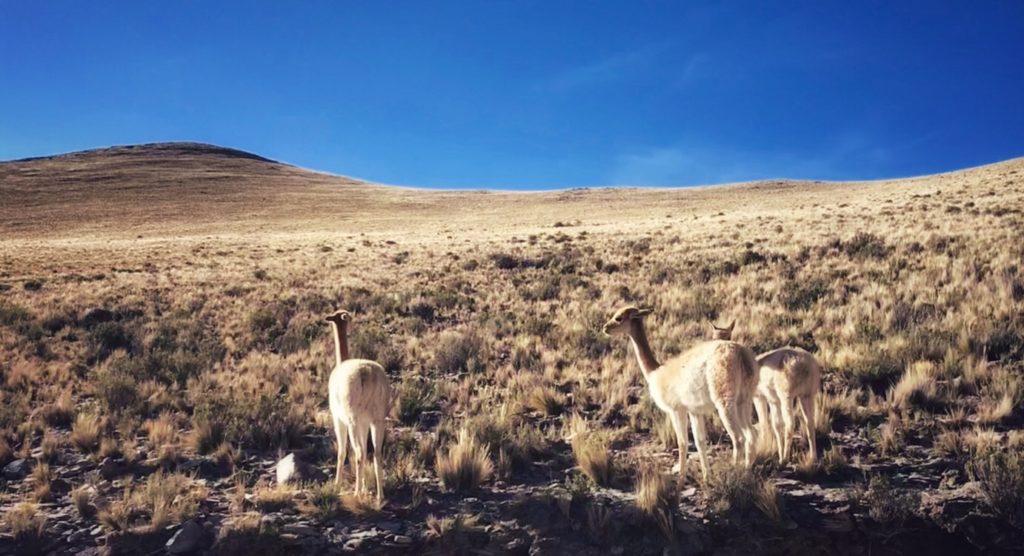
Forty minutes later, shivering in the biting wind and clinging to each other for warmth, we stood admiring the jagged Serranía del Hornocal. It was a mountain, it was colorful, and it was beautiful. Trin did not count the colors here, it was too cold, his lips might crack.
The colors are caused by minerals and oxidation. This mountain is stunning, the entire area has many colorful deposits.
Colors of Joy
Hardly anyone was out to see the sights, they were all watching the game. So when we saw three guys standing beside an SUV with the rear tire off and the SUV resting on its disk break waving us down, we stopped. Their jack was bent after they took off their flat tire and the SUV lurched forward. Jose seemed a bit reluctant to help out, probably wanting to be back in town to see the tail-end of the game, but he jumped out and changed the tire for them with his tools.
When we loaded back up into our truck the game was progressing well. Our driver clapped excitedly when Argentina scored another goal. Dust puffed out from his hands, changing the tire was dirty work.
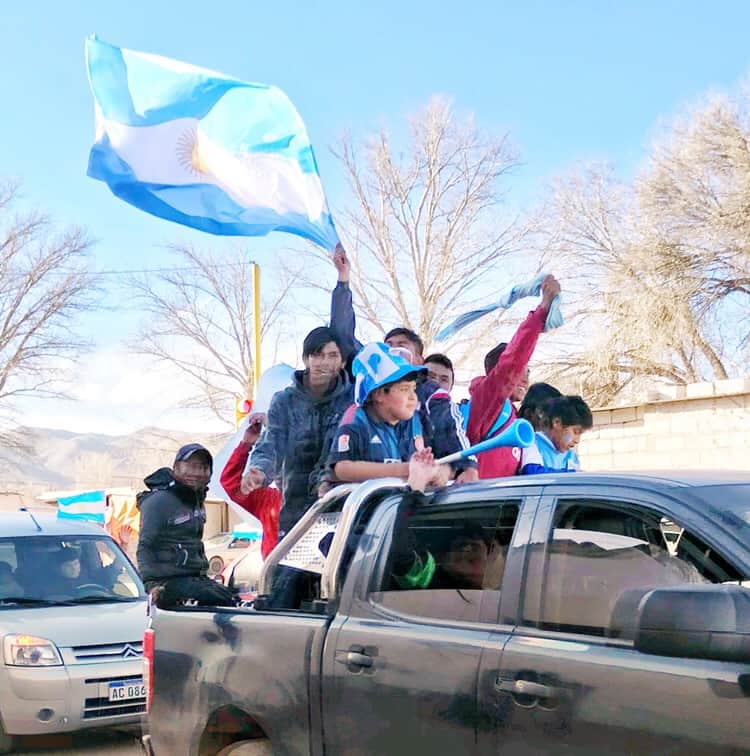
We arrived back to an exuberant town. Argentina had won. Flags were flying, people were laughing, crying, jumping up and down. A procession of cars driving around the city happily honked their horns. People in the back of the trucks jumped up and down waving flags. Other cars joined the procession and the line grew longer and longer. I spotted one very confused dog sitting on the sidewalk looking a bit scared wondering what was going on.
I’ve never been a sports fan, but here for the first time I kinda got it. This is a people who enjoy the fun things in life. They are excited and proud of their country for their accomplishments.
I slept well that night with dreams of colorful mountains, flags and the colors of freedom. All painted a people who found joy in the best things in life.


What amazing colors! Again, something I’d never heard of and have enjoyed vicariously through your post!
Maybe you can take a road trip here sometime. Only 20 hours from Iquique 🙂
Wow! Sounds like an enjoyable and laid back country. What a relaxing time you guys can have in Argentina. Can’t wait to hear more about it.
We are really enjoying this country:)